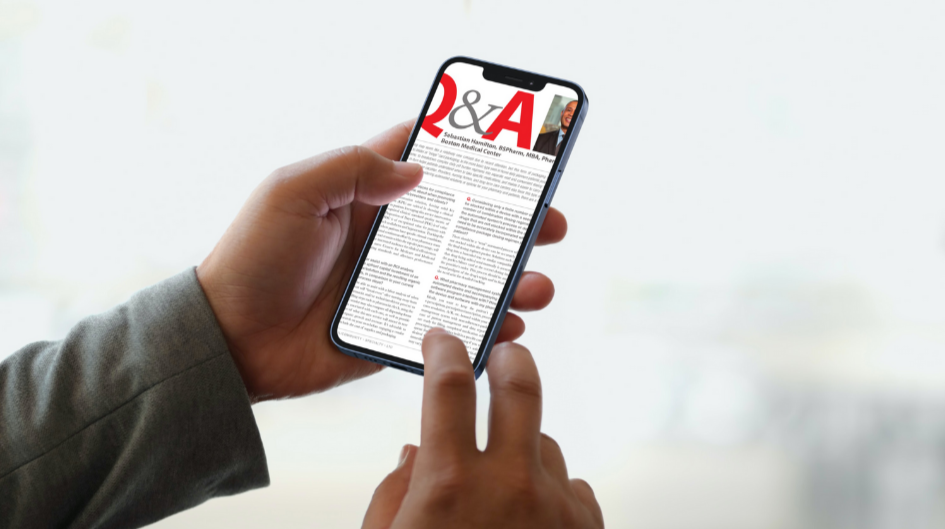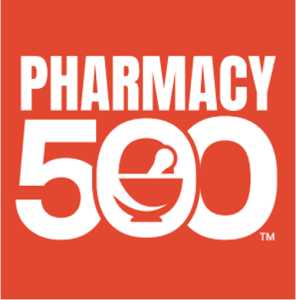Compliance packaging may seem like a relatively new concept due to recent attention, but this form of packaging has been used for decades. From strip, to blister or “bingo” card packaging, to the more basic type seen in home daily planners patients purchase on their own, the concept is the same; to breakdown complex daily pill burden regimens into separate neat and convenient dosing “buckets” for each time of the day. This in-turn helps patients understand when to take specific medications, and makes it easier to carry needed doses for a specific period of time such as on vacation. Providers, nursing homes, and long-term care centers also favor this type of packaging due to its simplicity and safety. When considering automated solutions or options for your pharmacy and patients, there are a few items you may want to understand.
Q. What are some considerations for compliance packaging you should think about when promoting this business to patients/providers and clients?
Irrespective of the automation solution, having solid key performance indicators (KPIs) are critical in showing a clinical benefit and outcome to patients leveraging this service intervention option. Using a recognized clinical standard quality metric of compliance such as Proportion of Days Covered (PDC) is of value in general. In fact, PDC is of exceptional value for patients with chronic conditions such as diabetes and hypertension. Tracking the PDC in the instance where patients have specific chronic conditions, along with an intentional continuous effort by your pharmacy team to move patients into and remain within the top tier percentage, will resonate well with the interested audience for clinical effectiveness. This strategy helps meet Centers for Medicare and Medicaid Services (CMS) rating standards and alleviates performance adjustment fees.
Q. Can the vendor assist with an ROI analysis that assesses the upfront capital investment of an automated device/solution and the resulting organic growth of patients, in comparison to your current specific manual process steps?
The vendor should be able to assist with a labor analysis of when your capital investment will “break-even” after moving away from manual labor (a pharmacist and/or technician-driven process) to automating certain filling steps such as pharmacist checks using the acquired device. The vendor may also compare all dispensing forms and the relative costs associated with each one, as well as provide data that is suggestive of what this new service will attract in new patients leading to organic growth and revenue. It’s advisable to conduct adequate research and cost analysis of supplies and packaging before engaging a vendor.
Q. Considering only a finite number of drugs can be stocked within a device with a seemingly infinite number of combination dosing regimens, how does the automated system’s process or device manage drugs that are not stocked within the device, yet still needs to be accurately incorporated within a finished compliance package dosing regimen packet for a patient?
There should be a “semi” automated process where drugs that are not stocked within the device can be accurately incorporated into the final dosing regimen packet. Solutions such as barcoding of the drug into a barcoded tray or similar compatible process to ensure that drug being added semi-manually is accurately dispensed into the packet/blister card at the correct dosing interval according to the provider’s order. This process should be auditable and have a sound pedigree of the drug’s origin and its final dispensing should the need arise for detailed tracking.
Q. What pharmacy management systems does the automated device and accompanying device’s software program interface with? How integrated is the device and software with my pharmacy system?
Ideally, you want to keep the patient’s profile, receipt of e-prescriptions, prescription transcription, processing, adjudication, error resolution, A/R, etc. housed within your existing pharmacy management system with non-adherence-packaging patients for ease of patient management and data reporting. Once orders are ready for filling, completed medication adherence packaging prescriptions are then either held in a specific compliance packaging queue (for batching or future processing if you wish based on your desired workflow), or sent to the device’s software program for immediate packaging. The level of single or bi-directional interface may vary, with the latter being the “gold standard” for posting back information into your pharmacy system’s patient profile should the need arise for specifics from one database.
Q. In addition to the capital cost for the automated device, what other peripherals are recommended from the manufacturer based on your desired workflow to increase accuracy and efficiency, and what are their costs?
The largest cost for a compliance packaging solution will certainly be associated with the base automated device unit. However, depending on your desired workflow, you may decide to consider additional peripheral devices that will complement and improve the process. Items such as tablet splitters, supply storage, device feed items (spools in the case of strip packaging), or finished packaging scanning device that help speed and automate the final check (PV2), are just a few options that may provide a benefit for an additional investment. The cost of these items adds up, so be cognizant of what is a need versus a nice to have.
Q. What is the level of IT software and hardware support the agreement offers? Are software updates included? Also, what are the daily, weekly, and monthly maintenance tasks needed to keep the unit operating efficiently?
Important questions can easily be overlooked if the focus is only on what the device is engineered to do and the implementation plan. IT software and hardware support are obvious considerations when thinking about how to keep the device operating as intended with little to no downtime. Ask whether there are additional costs involved should a downtime event happen after weekday hours or during the weekend. A less than twenty-four on-site response time is ideal when the need arises. Software updates should be standard with no additional costs for basic updates, while upgrades or enhancements may come at a cost. So, gain a good understanding what these costs are upfront. Finally, knowing how much time will need to be dedicated by a member of your team to perform periodic maintenance-specific tasks must be taken into account. You may discover that these tasks may use up as much time in labor hours as a manual process.
Q. What is the capacity of the device, and what are the options to increase capacity as demand grows?
Ideally, if you are intentional about promoting and offering this option to your patients/providers and clients, growth in demand and revenue will follow. What you do not want to have happen is your device is struggling to keep up with the growing demand, impacting service levels that can lead to poor patient/provider and client experience. You also do not want to discover at this time that the cost to increase capacity is another large capital investment that essentially will offset any revenue growth. Manufacturer-engineered modular extensions that attach onto the existing “core” unit device help increase capacity for a relatively small additional capital investment. They are a great option if you want to start small to allow time for the demand to grow instead of opting for a high-capacity unit with large upfront capital expense that requires you grow into.
Q. What are the implications for the type of technology being used for automated compliance packaging in advancing the profession of pharmacy?
Due to advancements in barcoding technology, one benefit is the level of accuracy of the final packaged product. Combining this type of technology with a process where scans or images of the final packaged product are analyzed for accuracy, would identify which packages are accurate versus those that may require closer review. Consequently, the final pharmacist verification step (PV2) becomes elemental in nature. Depending on the level of comfort and proven accuracy, this may open up the conversation with the appropriate groups around tech-check-technician whereby a trained and highly skilled certified pharmacy technician can provide a final check of the product to be dispensed. As a result, the pharmacist would have more time to interact with patients and providers. This approach would allow the technician and pharmacist to operate at the top of their respective licenses.
 Sebastian Hamilton, BSPharm, MBA, Pharm.D, RPh
Sebastian Hamilton, BSPharm, MBA, Pharm.D, RPh
Associate Chief Pharmacy Officer, Outpatient Pharmacy Services
PGY-1/PGY-2 Health System Pharmacy Administration & Leadership Residency Program Director Boston Medical Center
President-Elect, Massachusetts Board of Registration in Pharmacy
Dr. Sebastian Hamilton supports the outpatient pharmacy operation at Boston Medical Center; New England’s largest safety-net health system. Leading a highly-motivated team, over 1.3 million prescriptions a year are filled to the benefit of the surrounding communities. Areas of experience is within outpatient, retail, community health center, mail order pharmacy; traditional and specialty program growth business strategies, leveraging pharmacy systems and automation solutions to increase accuracy and efficiency with KPIs, consolidation of prescription processing and filling, supply chain management, licensing and credentialing, 340B compliance, workforce development, all while keeping the pharmacy team engaged and motivated. Dr. Hamilton also advocates for the advancing of the profession of pharmacy through his service on state boards of pharmacy and with the National Association of Boards of Pharmacy.








